Thinking of a career in visual merchandising? We’ve got the roles, opportunities, trends, and skills you need to succeed in this exciting career in 2026
Impacting sales, the customer experience, and brand identity, visual merchandising is a great career path for those with visual design skills and in-depth knowledge of how the retail space works.
However, with the rise of new technologies, growing sustainability concerns, and shifting customer expectations, how can aspiring visual merchandisers prepare for the anticipated growth and transformation in the field? And what specialized roles might emerge as a result of these evolving trends?
If these are questions you’re looking for answers to, then you’re in the right place. In this article, we guide you through the job roles and opportunities that are coming to the fore in visual merchandising in 2026.
From roles in digital visual merchandising and retail display specialization to trends in personalized merchandising and augmented reality, we’ll equip you with the knowledge you need to succeed.
- What is visual merchandising?
- The importance of visual merchandising in retail and e-commerce
- Key visual merchandising job roles
- Visual Merchandising Opportunities to look out for in 2026
- What skills do you need for a career in visual merchandising?
- Conclusion
Ready to learn more? Let’s jump in!

What is visual merchandising?
Visual merchandising refers to how product displays are organized, arranged, and designed within a retail environment to showcase goods, attract customers, and encourage sales. The visual merchandiser uses a range of design skills, techniques, and tools such as user research, color schemes, product placement, typography, and lighting to showcase products effectively and create an environment that is aesthetically appealing to shoppers. The goal is to boost a customer’s overall experience with a brand, draw attention to particular goods or offers, and provide a visual guide for customers within the store to find and buy what they need.

The importance of visual merchandising in retail and e-commerce
Visual merchandising in retail and e-commerce is a valuable tool that directly impacts a customer’s in-store and online shopping experience. In physical retail outlets and stores, visual merchandising helps to create an inviting atmosphere, draws customers’ attention to key products and sales, and helps visitors navigate the space. Crucially, when implemented skillfully, visual merchandising also guides customers to products that are relevant or related to the ones they came in to buy, increasing impulse purchases and general awareness of the brand’s other products.
When it comes to e-commerce, the visual merchandiser still seeks to attract customers’s attention and increase sales with enhanced product presentation. However, in an online environment, they do this through the use of high-quality images, well-organized layouts, and categories that are clearly labeled and easy to navigate. When this is implemented effectively, the visual merchandiser is able to help shoppers feel confident in their buying choices and reduce decision fatigue. As with offline visual merchandising, in an online portal, relevant products are placed prominently or actively recommended to the user to increase sales.
Key visual merchandising job roles
Let’s dive into the different roles in the field of visual merchandising, from the digital visual merchandiser to the retail display specialist. If you’re looking for a creative and impactful role, your dream job could well be on this list.
1. Visual merchandiser
The role of the visual merchandiser is to create engaging visual displays in retail spaces to enhance the shopping experience and highlight specific products or offers that encourage sales. These skilled professionals visualize their ideas using props, colors, lighting, and signs, creating unique windows and in-store displays while boosting the store’s overall aesthetic. In addition, the visual merchandiser ensures that the brand’s visual identity is carefully interwoven throughout their displays.
Key responsibilities of the job include:
- Creating visually compelling displays that attract customers, highlight key products, and boost the shopping experience
- Analyzing customer behavior to optimize product placement and give prominence to popular items
- Draw insights from sales data to know which products to highlight or recommend
- Maintain a visually cohesive and appealing shopping environment
- Align all in-store and window displays with the brand’s visual identity
Average salary in the US: $62,742 per year
Average salary in India: ₹5,00,000 per year
*Salary data from Glassdoor.com and Glassdoor.co.in
2. Visual merchandising manager
Overseeing the entire visual merchandising strategy for a retail brand, the visual merchandising manager typically leads a team of visual merchandisers in creating compelling displays that appeal to target customers and increase sales across a range of stores. The job requires team leadership, analytical, and strategic planning skills, as well as strong knowledge of visual branding in the retail sector. A key part of the role is creating a strategy that aligns store displays and layouts with the brand’s visual identity and business objectives.
Key responsibilities of the job include:
- Overseeing the entire visual merchandising strategy for a retail brand
- Aligning brand identity with in-store displays
- Leading a team of visual merchandisers
- Collaborating closely with marketing and store operations departments to ensure consistency in visual messaging
- Analyzing sales data, trends, and product performance and using insights to inform displays
- Maintaining visual standards across stores
Average salary in the US: $76,596 per year
Average salary in India: ₹13,00,000 per year
*Salary data from Glassdoor.com and Glassdoor.co.in
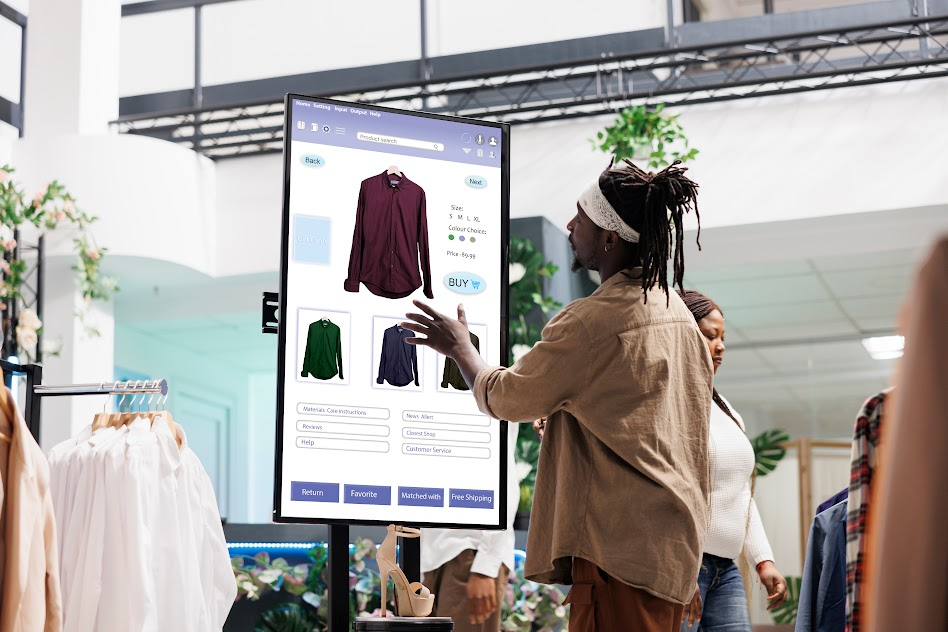
3. Digital visual merchandiser
A digital visual merchandiser is concerned with the online presentation of products to enhance the online shopping experience for users and boost online sales. Curating and optimizing online product displays, the digital visual merchandiser works closely with e-commerce platforms, marketing teams, and content professionals to ensure promotional displays align with a brand’s existing visual identity and meet the preferences of target audiences. A key part of the role is analyzing user data such as customer behavior and sales trends. This data, combined with the visual merchandiser’s extensive design expertise, informs future product placement strategies and promotional ideas to drive customer satisfaction and sales.
Key responsibilities of the job include:
- Arranging product categories for easy navigation
- Leveraging high-quality images, videos, and graphics to showcase products
- Working on digital campaigns and seasonal promotions with marketing teams
- Monitoring customer behavior and sales trends by using data analytics software
- Incorporating insights from data analytics into improving product placements and promotional strategies
Average salary in the US: $67,746 per year
Average salary in India: ₹5,00000 per year
*Salary data from Glassdoor.com and Glassdoor.co.in
4. Retail display specialist
A retail display specialist supports retail spaces by using their knowledge and expertise to create visually appealing product displays that meet the following objectives:
- To attract customers
- To enhance the overall shopping experience
- To drive sales
The retail display specialist works closely with store managers, marketing teams, and product suppliers to gain a comprehensive picture of the brand’s visual identity, aesthetic, and product goals, and translates this information into creative display concepts. While retail displays will vary from store to store, the following tools are frequently employed to create vibrant in-store and window displays that pique the curiosity of customers:
- Experimental lighting
- Bold color schemes
- Elaborate signage
- Visually interesting props that conform to a theme
- Furniture that frames, supports, or highlights the products
By combining tools and design elements like the above, a retail display specialist creates compelling visual narratives that highlight key products, promotions, or seasonal collections. In addition, high-demand and relevant items will be strategically displayed throughout the store to encourage impulse purchases.
Key responsibilities of the job include:
- Designing, curating, and creating visually interesting in-store product displays
- Working closely with teams to align the display with the brand’s existing aesthetic and goals
- Using lighting, colors, signage, and props to boost product visibility
- Optimizing product placement to encourage sales
- Being informed about retail trends and consumer behavior
- Managing the installation and maintenance of in-store and window displays
- Sourcing materials and products for displays
Average salary in the US: $102,512 per year
Average salary in India: ₹6,00,000 per year
*Salary data from Glassdoor.com and Glassdoor.co.in
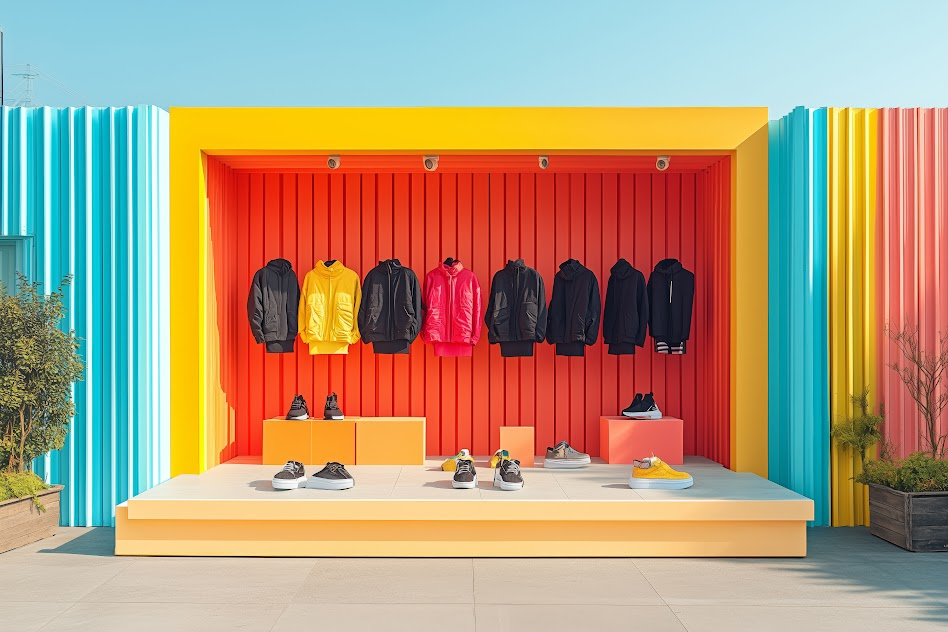
5. Merchandising Coordinator
The merchandising coordinator role is a logistical retail position that is responsible for ensuring the right products are available in-store at the right time and in the right quantities. This individual works intimately with suppliers, store managers, and buyers to monitor stocks, oversee inventory levels, track sales data, and analyze product performance. By constantly reviewing this data, the merchandising coordinator has a clear overview of the products that are in store and can quickly identify which products need to be reordered or replaced. The merchandising coordinator will also quickly flag up underperforming items that need to be removed and swap out any products that no longer align with the brand’s strategy and goals.
Timely deliveries, issue-free supply chains, and smooth operations are also the responsibility of the merchandising coordinator. These logistical responsibilities require strong communication, collaboration, organizational, and analytical skills from the merchandising coordinator in addition to a creative problem-solving mindset.
Key responsibilities of the job include:
- Ensure products are stocked and arranged according to brand goals
- Track inventory levels and reorder popular items as required
- Monitor product performance and identify underperforming items
- Coordinate product displays, promotions, and seasonal campaigns
- Communicate with suppliers and vendors to ensure timely deliveries
- Resolve supply chain issues
- Analyze sales data and trends
Average salary in the US: $53,947 per year
Average salary in India: ₹360,000 per year
*Salary data from Glassdoor.com and Glassdoor.co.in
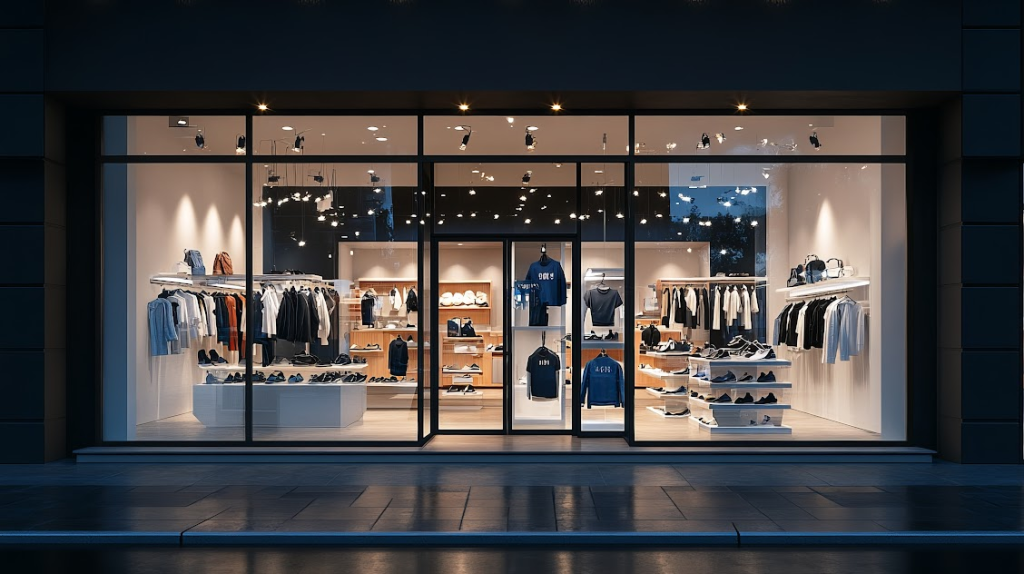
Opportunities to look out for in visual merchandising in 2026
Personalization, cross-channel merchandising, and sustainability are just some of the trends and opportunities that visual merchandisers and retailers will be keen to explore in 2026. Let’s dive into what these changes in the industry might mean for customers, retailers, and businesses.
1. Sustainable visual merchandising
These days, consumers want to feel like the brands they invest in align with their values. With sustainability high on the agenda of many customers, brands can leverage this trend in their visual merchandising to boost credibility with a wider range of audiences and increase customer loyalty.
To do this, a brand needs to focus on using sustainable materials, utilizing responsible waste management systems, and incorporating eco-friendly production processes in the creation of their displays. Some examples of how to do this include:
- Incorporating upcycled materials
- Embracing energy-efficient lighting solutions
- Using eco-friendly packaging
2. Augmented reality (AR) & virtual reality (VR) integration
Advances in technology are providing more opportunities for customers to interact with products, services, and experiences within a traditional retail environment. These immersive and interactive opportunities make the shopping experience more engaging, personalized, and entertaining, boosting sales and overall brand satisfaction. What we’re likely to see more of over the next twelve months include:
- The opportunity to virtually “try on” products such as clothing, makeup, and accessories using augmented reality technology
- Immersive virtual store tours that use virtual reality to blend online and offline shopping experiences
- Interactive digital displays that can offer personalized product recommendations or show product details in response to customer behavior in-store.
3. Personalized Merchandising
One of the biggest changes we can expect to see in the retail environment is an increase in personalized merchandising. Thanks to advances in data analytics and the application of sophisticated customer insights, brands can create bespoke, real-time experiences that truly resonate with an individual’s goals and preferences.
Some examples of this might include:
- Personalized product displays based on a customer’s purchase history
- Digital, targeted signage that is targeted to the shopper’s demographic or behavior
- Dynamic displays showing relevant special offers that are tailored to a customer’s interests
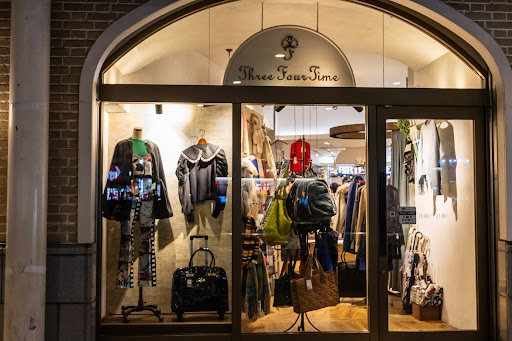
4. Cross-channel merchandising
With many customers enjoying both digital and in-store retail experiences, the line between online and offline shopping is becoming increasingly blurred. While many individuals are drawn to the convenience offered by e-commerce retailers, they also wish to have the tangible, real-world shopping experiences that physical stores can offer. Stores that provide a seamless and integrated shopping experience across all platforms with cross-channel merchandising will succeed in winning over the widest range of customers.
Some ways to integrate cross-channel merchandising include:
- Offering click-and-collect services where users order an item online but pick it up in-store.
- Using QR codes in stores to encourage brand engagement across digital as well as physical touchpoints
- Recreating online visuals in an offline environment to offer a consistent brand experience across physical and digital stores.
What skills do you need for a career in visual merchandising?
A visual merchandiser needs to embody a range of soft skills and technical prowess in order to succeed in this competitive career. Let’s take a look at the areas where you’ll need to shine if you want to land a coveted visual merchandising role.
1. Creativity and design sensibility
Creative skills and an eye for design are key requirements to succeed in a visual merchandising career. Professionals in this role need to be able to visualize complementary material combinations as well as design eye-catching, original product displays that accurately reflect the brand.
Originality and innovation are crucial here. Those who love to experiment with styles, colors, typography, and product types will particularly enjoy creating fresh and appealing store layouts that stand out from those of their competitors and draw in customers. Employers will also look for knowledge of and experience using color theory, balance, and spatial design in visual merchandising to ensure cohesive and attractive displays.
2. Knowledge of retail trends and consumer behavior
As is the case for all design-related professions, the key to a successful merchandising career is knowing the target user inside and out. From shopping habits and preferences to desires and goals, a visual merchandiser needs to know how the target user thinks and feels in order to curate displays that really appeal to them and encourage them to make purchases.
Data collection and analytical skills come to the fore here. Visual merchandiser needs to know how to collect and analyze user data so they can effectively apply it to their designs. Conducting user research through interviews, surveys, questionnaires, and customer observation, the visual merchandiser draws valuable insights into how customers interact with products and displays that enable them to curate and create more effective in-store visuals.
Finally, knowledge of changing retail trends and evolving consumer behavior is invaluable in this profession. In addition to conducting their own research, a visual merchandiser can stay ahead of retail trends by following industry influencers, reading blogs, listening to podcasts, and subscribing to newsletters. This information helps them ensure their displays are always on-trend and relevant to their audience.
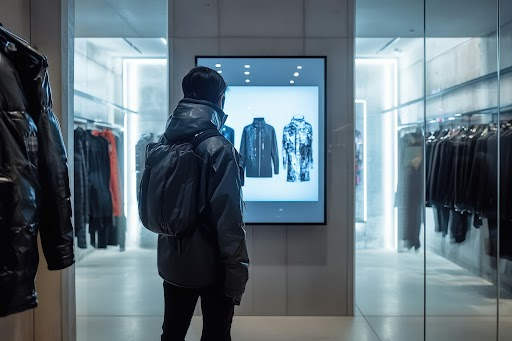
3. Strong communication and organization skills
Visual merchandisers are frequently required to collaborate extensively with other teams such as marketing, sales, and product management. To do this effectively, they need to be able to clearly communicate ideas, plans, and themes to those of different levels of seniority and with different knowledge, skills, and professional backgrounds. This requires strong communication skills to ensure that members of all teams are aligned on a project and its progress.
Strong organizational skills are also key, as a visual merchandiser tends to juggle a range of projects at once. To multitask effectively without compromising on the quality of any project requires the ability to plan, organize, and delegate without dropping the ball. It also requires the visual merchandiser to know which tasks to prioritize to ensure the project doesn’t stray from the businesses’ goals or the needs of the customers.
4. Technical proficiency in design and project management software
From Adobe Creative Suite to Trello and Asana, a visual merchandiser needs to be proficient in the latest digital design and planning tools to stay competitive in the field. While Adobe Photoshop and Illustrator support 3D modeling, planning store layouts, and visualizing displays, Asana and Trello support resource management, task delegation, project progress tracking, and meeting planning to help the team stay on top of what is happening and when. A visual designer needs to demonstrate technical expertise in tools such as these to ensure their creative concepts come together on time and as expected.
Conclusion
We hope you’ve enjoyed our run-through of visual merchandising job roles, salaries, opportunities, and trends. As we have seen, a career in visual merchandising isn’t just about demonstrating a flair for creativity or a love of visual design, this sector requires an understanding of emerging tools and technology, consumer behavior, and how digital and physical retail spaces can be bridged through branding. To stand out from the competition, a visual merchandiser should show an aptitude for logistics, planning, analysis, and collaboration as these skills lead to the efficient organization of products, smoother workflows, data-backed decision-making, and seamless teamwork.
If you’d like to read more articles like this one, head back to the AND Academy Design Blog.
Next Steps
If you enjoyed this article and would like to learn more about interior design, head back to AND Academy’s blog for more articles like this one. We also recommend you check out this project by AND Learner, Sonali Khajuria to get inspiration for your next interior design project.
In case you need further assistance, here are some resources to consider:
- Watch this session by Snehanshu Mukherjee, Founding Partner at T.E.A.M and Mansi Almadi, an Interior Designer at Studio Lotus
- Talk to a course advisor to discuss how you can transform your career with one of our courses.
- Check out our Interior Design courses – all courses are taught through live, interactive classes by industry experts.
- Take advantage of our scholarship and funding options to overcome any financial hurdle on the path of your career transformation.
Note: All information and/or data from external sources is believed to be accurate as of the date of publication.









